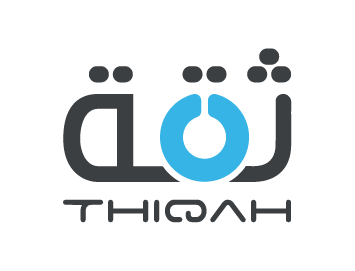In today’s fast-paced business environment, many organizations struggle with common challenges—slow decision-making, disengaged employees, and a noticeable lack of innovation.
These issues often stem from overly rigid hierarchies and micromanagement. The solution? Employee Empowerment.
More than just a trendy buzzword, employee empowerment is a powerful management philosophy.
It centers on giving employees the autonomy, resources, and trust they need to take ownership of their work and make impactful decisions.
This article breaks down the essence of empowerment in the workplace, its transformative benefits, and a practical guide to implementing it effectively.
Balanced Score Training Center will allow you to choose the best way to empower your employees.
What is Employee Empowerment? (A Definition for the Modern Workplace)
Here, we discuss what employee empowerment truly consists of.
Beyond Delegation: The Shift from Control to Trust
At first glance, employee empowerment might sound like simple task delegation—but it’s far more profound.
Delegation assigns responsibility for what needs to be done, empowerment transfers ownership for the outcome.
Consider the difference:
- Delegation: “Write a report by Friday.”
- Empowerment: “We need to improve team communication. Can you lead the initiative and recommend solutions?”
The latter fosters innovation, critical thinking, and a sense of purpose—keys to unlocking peak performance.
The 3 Pillars of True Empowerment
Effective empowerment in the workplace is built on three foundational pillars:
- Autonomy: Employees are given freedom in how they approach their tasks and responsibilities. They are trusted to make decisions and take initiative.
- Competence: Empowered employees must be equipped with the knowledge, skills, and tools necessary for success. This includes training, mentorship, and access to resources.
- Impact: Employees need to understand how their work contributes to broader organizational goals. Seeing their influence boosts engagement and motivation.
Become a better manager today with our management training courses.
The Business Case: The Real Empower Employee Benefits
Businesses only exist due to having employees, so, more empowered employees would lead to more successful businesses.
Organizational Benefits: Fueling Growth and Agility
When companies embrace employee empowerment, the ripple effects are significant:
- Increased Innovation and Problem-Solving
Empowered teams think proactively, experiment more, and offer creative solutions without waiting for permission. - Higher Productivity and Quality of Work
Employees who feel trusted and capable perform with greater efficiency and take pride in their output. - Improved Employee Retention and Lower Turnover Costs
Empowered workers are more satisfied, reducing attrition and the high costs associated with hiring and training replacements. - Enhanced Customer Satisfaction
When employees are trusted to solve problems on the spot, customers get faster, more personalized service—boosting loyalty and brand reputation.
Employee-Level Benefits: Creating a Motivated Workforce
Empowerment doesn't just serve the business—it transforms employee experiences:
- Greater Job Satisfaction and Morale
Feeling trusted and valued leads to higher levels of happiness and engagement at work. - Opportunities for Skill Development and Career Growth
Empowered roles stretch employees beyond their current capabilities, fostering growth. - A Stronger Sense of Ownership and Purpose
Employees feel like stakeholders, not just workers. This sense of purpose fuels long-term commitment and contribution.
Check out our training courses in Rome.
How to Foster Empowerment in the Workplace: 5 Actionable Strategies
These strategies are vital to ensure that your employees feel empowered in the workplace.
1. Grant Autonomy with Accountability
Autonomy isn’t a free pass—it must be paired with accountability. Managers should set clear goals and expectations (the what and why) while giving employees the freedom to determine the how. This fosters creativity and responsibility in equal measure.
2. Promote Open Access to Information
Transparency is vital to informed decision-making. Sharing performance metrics, strategic plans, and market insights helps employees align their actions with company goals. When everyone has access to the bigger picture, they can make smarter, more empowered decisions.
3. Create a "Fail-Forward" Environment
Fear of failure is one of the biggest obstacles to empowerment. Organizations must actively reframe mistakes as learning opportunities. Celebrate intelligent risk-taking, analyze outcomes without blame, and encourage experimentation—especially when the goal is innovation.
4. Invest in Competence and Development
Training and development are crucial tools for building empowered employees. Offer workshops, mentorship programs, and continuous learning resources. These investments not only increase competence but also signal that the company is committed to employee growth—a core empower employee benefit.
5. Establish Clear Feedback and Recognition Channels
Empowerment thrives on feedback loops. Encourage regular peer and manager feedback through systems like 360-degree reviews. Recognize empowered decisions and successes publicly, reinforcing a culture where initiative and ownership are celebrated.
Real-World Examples of Employee Empowerment in Action
Where can we see successful implementations of employee empowerment strategies?
Netflix's Culture of "Freedom and Responsibility"
Netflix exemplifies empowerment with policies like unlimited vacation and employee-managed expense reporting. These practices reflect high levels of trust—and the results speak for themselves. Employees feel responsible and act accordingly, maintaining high performance without rigid oversight.
The Ritz-Carlton's "$2,000 Rule"
Every Ritz-Carlton employee is empowered to spend up to $2,000 to solve a guest’s problem, no manager approval required. This remarkable level of trust ensures fast, personalized service and cements customer loyalty, proving the ROI of true empowerment.
Atlassian's "ShipIt Days"
Atlassian gives employees 24 hours to work on any project they choose during quarterly “ShipIt Days.”
The result? Breakthrough ideas, improved collaboration, and a culture where innovation is everyone’s responsibility, not just leadership’s.
Conclusion: Empowerment is a Culture, not a Checklist
Employee empowerment is not a one-time initiative or a trendy management hack. It's a cultural shift—one that redefines leadership as the art of enabling others to lead, contribute, and innovate.
By building trust, investing in employee growth, and creating space for independent thought and action, companies unlock the full potential of their people. And in return, employees give their best—because they feel it truly matters.
The modern leader doesn’t need to have all the answers. They just need to build an environment where the best answers can come from anywhere.
Contact us today and become a part of the change you want to see.
Frequently Asked Questions (FAQ)
The following questions can help you understand more about employee empowerment.
1. What is the biggest barrier to employee empowerment?
The biggest barrier is micromanagement and lack of trust from leadership.
Empowerment cannot take root in an environment where managers feel the need to control every detail. Trust is the foundation.
2. How does empowerment differ for remote vs. in-office teams?
While the core principles remain the same, remote empowerment relies more on:
- Clear documentation of processes and expectations
- Asynchronous communication tools
- Measured outcomes over observed activity (hours worked)
Remote teams need structure and autonomy balanced carefully.
3. What is the manager's role in an empowered workplace?
In an empowered environment, the manager transitions from a taskmaster to a coach.
Their main responsibilities include:
- Defining goals and boundaries
- Providing support and resources
- Removing obstacles
- Giving feedback and recognition
Empowered teams thrive with facilitative—not directive—leadership.
4. Can you have too much employee empowerment?
Yes, empowerment without structure can lead to chaos. There must be:
- Clear goals and accountability
- Defined roles and responsibilities
- Alignment with the company’s mission and vision
The ideal approach is freedom within a framework—not complete autonomy without direction.
Ready to take the first step?
Choose one of the five empowerment strategies to implement this week.
Whether it’s loosening control, sharing more information, or celebrating risk-takers—starting small can lead to a truly empowered workplace.
Read more:
How to Choose the Best Change Management Training Courses? Complete guide.



















